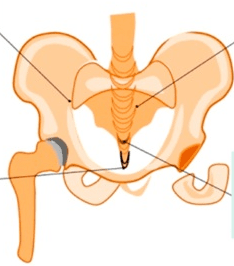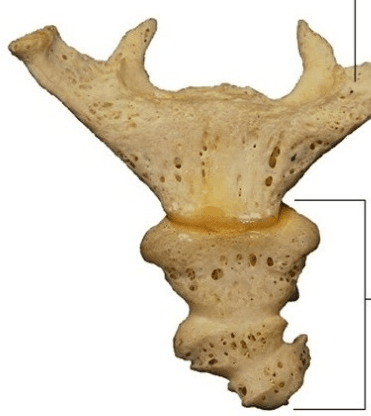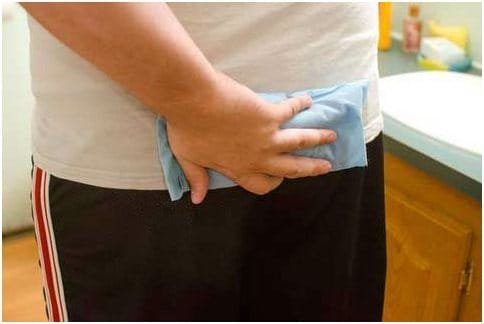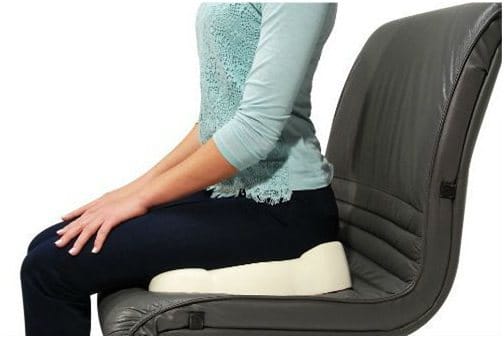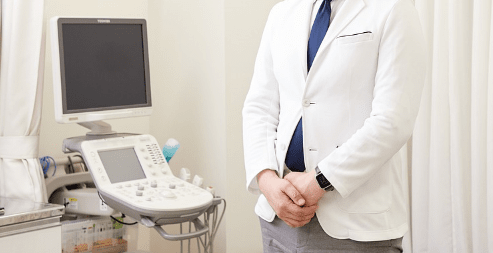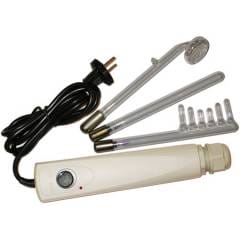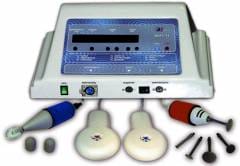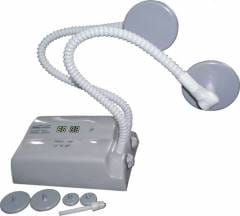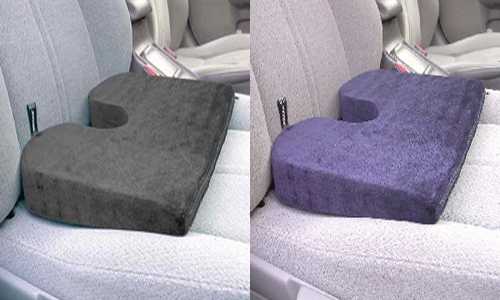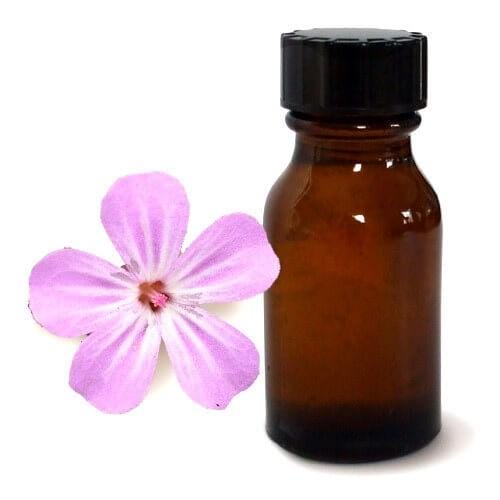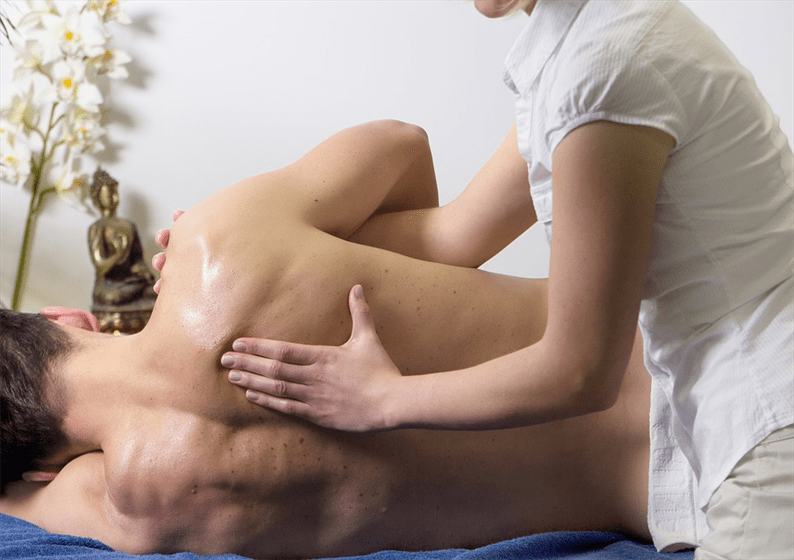Why there are pains in the tailbone when sitting and standing up: causes, diagnosis and treatment. What to do if tailbone hurts when you sit and stand up?
Tailbone anatomy
The coccygeal bone ends with the vertebral column, this is its distal section. Animals have a tail; in humans, this part of the spine is the analogue of this organ.
The tailbone consists of 4 – 5 vertebrae, fused together. This area of the spine is a single bony formation, similar in shape to a triangle. It is located with the top down, tilted forward. The width of the bone is usually greater than the length. The base grows together with the apex of the sacrum. The connection of these two sections is provided by the intervertebral disc.
Due to the presence of a disc, the tailbone retains mobility, can be deflected back. In children, the tailbone is represented by 4 – 5 separate vertebrae, which grow together by puberty. With age, the motor functions of the bone weaken.
There are no significant differences in bone structure between women and men. The end part of the spine plays an important role in the work of the musculoskeletal system. Muscles and joints are attached to it, which are the frame and receptacle of the organs of the genitourinary system and the distal part of the digestive tract.
For females, the tailbone is important enough. It is mobile, during labor it moves back, there is a divergence of the pelvic floor muscles. The mobility of the coccygeal bone contributes to the normal passage of the child through the birth canal. With injuries in this area, the mobility of the joint is impaired: after fractures of the tailbone, natural childbirth may become impossible.
Remember! If possible, it is best to avoid injury to the coccyx area.
This bone is small, but it has many important functions. For any person, this section of the spine provides support, as does the entire post. Damage leads to severe pain, disruption of the work of internal organs.
Structure and muscular apparatus
The coccyx includes 3-5 vertebrae, which gradually grow together throughout a person’s life. Most often this happens before the age of 12-15. Only the upper vertebra remains mobile, against which the coccyx sometimes bends.
For the female body, this moment is positive, since the mobility of the element facilitates the birth of a baby. In men, all the vertebrae of the coccyx are in most cases completely fused.
The muscular apparatus consists of the following muscles:
| Name | Description |
| The pubococcygeal muscle | The muscle connecting the pubis and tailbone compresses the vagina and distal rectum, and also takes part in lifting the anus. In the male body, the pubococcygeal muscle is responsible for the tone of the prostate gland, it contracts during orgasm. |
| Iliac-coccygeal | The muscle that forms the tendons located between the rectum and the top of the tailbone. The iliococcygeus muscle is responsible for lifting the pelvic floor. |
| Recto-coccygeal muscle | The muscle starts from the 2nd and 3rd sections of the lower spine, parallel to the muscle fibers of the rectum. |
| Coccygeal | Beginning in the ischial spine, the anterior edge connects to the muscles that lift the rectum. |
| Sphincter | The annular structure that surrounds the anus, due to which it resembles a longitudinal slit in shape. |
Due to the muscles, tendons and ligaments that attach to the tailbone, it is an important part of the body.
Functions
The tailbone is located in a person in the end of the spine and its main function is to maintain the work of the musculoskeletal system. Thanks to him, the internal organs are also in the correct position.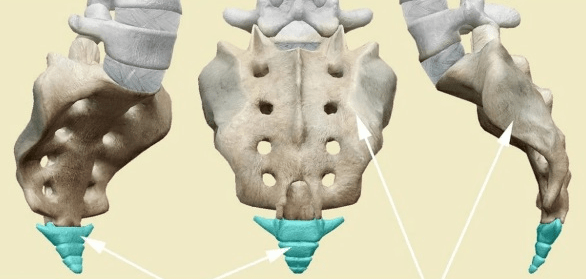
Among other functions of the coccyx, the following responsibilities should be highlighted:
- relief of labor;
- maintaining the pelvic organs by fixing the muscles on the tailbone;
- partial fixation of the gluteus maximus muscle;
- the location of the nerve plexus, from which the nerves diverge to the pelvic organs;
- additional support during squats, bends and other body movements.
The structure of the coccyx in humans
The tailbone allows you to evenly distribute the load on the spine. It also provides mobility to the hip joint, protects internal organs, and helps the skeleton to stay upright.
Features and differences in the structure of the sacrum and coccyx in women and men
The fairer sex is more often faced with the defeat of the coccyx and sacrum due to the anatomical structure of this part of the body. In women, it is short, wide and less curved.
Due to its great mobility, the tailbone can deviate by 8-14 degrees. Due to this feature, during labor, the opening in the pelvic area increases, which allows the baby to pass through it more easily. In men, the tailbone is less mobile, so it is less likely to be injured or bruised.
What is sacralization and lumbarization?
Among the anomalies that disrupt the development of the base of the spinal column and sacrum, there are pathological processes such as lumbarization and sacralization. In the first case, there is no fusion of the uppermost vertebra of the coccyx, it moves freely.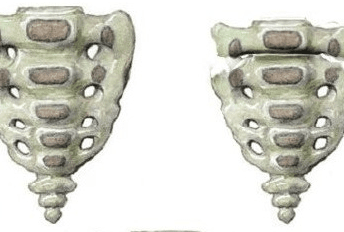
During sacralization, the lower lumbar vertebra is fused with the ilium or sacrum. In some situations, pathological processes provoke an increase in the transverse processes of the vertebra. Their shape also changes. The articulation or separation of the vertebrae from the sacrum occurs partially or completely.
Causes of pain in the coccyx and sacrum
The tailbone is located in the back of a person and in most cases its damage occurs due to physical impact (injury, damage). But there are other factors as a result of which a person has unpleasant sensations in the lumbar region, sacrum.
| Name | Description |
| Injury | Damage to the tailbone often occurs as a result of labor, after an unsuccessful fall, or with a precise blow to the lumbar region. The injury is accompanied by severe painful sensations, hematomas appear, soft tissues swell. The pain disturbs a person even during the act of defecation. Difficulties appear when the patient wants to sit down or bend over. |
| Pilonidal disease | Pilonidal cyst or epithelial coccygeal passage. This disease is characterized by the formation of fistulas in the skin through the hair follicle. Pathology is accompanied by painful sensations, accumulation of a small amount of pus. At the site of cyst formation, the skin swells and becomes inflamed. Sometimes the illness is accompanied by a high fever. |
| Tumors in the sacrum and coccyx | Malignant processes in the coccyx area provoke the appearance of osteosarcoma, teratoma or chondrosarcoma. The pain syndrome with the tumor is so strong that even drugs cannot help reduce it. |
| Obesity | In the case of extra pounds, the tailbone begins to hurt due to the increased load on it, especially when a person is sitting. |
| Idiopathic pain | Coccygodynia in most cases develops for no reason. Clinical symptoms go away on their own. Pain syndrome periodically worries, becomes chronic, so doctors prescribe painkillers to patients for a single dose. |
In each case, a person develops characteristic clinical signs, with which it is important to go to the hospital in a timely manner. A correctly established diagnosis will allow starting treatment as soon as possible and preventing negative consequences.
Characteristics of pain
Pain in the tailbone is varied, depending on the disease of which it is a symptom. With injuries, the pain is sharp and constant, with fractures, it is more pronounced; it increases with tension of the muscular floor of the pelvis. If the cause of the pain is a cyst, then the pains are chronic, aching, sometimes the pain borders on simply unpleasant sensations.
In women, pain in the coccyx area can be intermittent, during menstruation or menopause. Coccygeal pain occurs due to the fact that inflammatory processes can be exacerbated during menstruation.
Common diseases of the sacrum and coccyx
The tailbone is located in a person in the lower part of the spine from the back. Pain syndrome with its defeat can be the result of not only trauma. Discomfort and other symptoms appear as a result of the development of pathological processes. A comprehensive examination and a doctor will help to establish an accurate diagnosis.
| Name | Description |
| Osteochondrosis | A disease characterized by the formation of bone growths (osteophytes). In this case, strong painful sensations appear, since the neoplasms put pressure on the nerve endings. The disease is also accompanied by numbness in the affected area, the appearance of goose bumps and a burning sensation. |
| Lumbosacral spondylosis | The disease faced by people of different ages. Pathology occurs more often against the background of osteochondrosis, as a result of a degenerative-dystrophic process in the intervertebral discs. The destruction of cartilage tissue occurs, the body tries to compensate for the changes, as a result of which osteophytes appear. |
| Lumbar protrusion | The disease is characterized by protrusion of the vertebral discs, which have a protective function. Pathological processes provoke a decrease in the elasticity and height of the cartilage. Progressive changes lead to the formation of an intervertebral hernia, when the integrity of the membrane of the annulus fibrosus is disrupted. |
| Lumbar hernia | Complication of chronic lumbosacral osteochondrosis. Degenerative-dystrophic disease, as a result of which the annulus fibrosus gradually collapses. |
| Sciatica | A pathological condition characterized by an infringement of the sciatic nerve. There is a strong pain syndrome in the coccyx, buttocks and the back of the thigh. |
| Lumbalgia | A disease in which there is a lumbago in the lumbar region. The main reason is pinching of the nerve endings, resulting in severe pain and stiffness. Muscle spasm limits a person’s mobility. Lumbodynia in most cases occurs against the background of a hernia, protrusion or osteochondrosis of the spine. |
| Other diseases | Painful sensations in a person often arise not only as a result of damage to the coccyx itself. Many pathologies are masked in this way. We are talking about hemorrhoids, dysbiosis, cystitis, prostatitis, inflammation of the ovaries and other organs of the reproductive system. The same applies to lesions of the genitourinary system and the musculoskeletal system. |
A congenital anomaly is the complete absence of the coccyx. A rarely diagnosed situation, the causes of which are not fully understood by doctors. Experts are inclined to believe that the provoking factors are poor environmental conditions.
Pain when you get up
The situation when pain occurs when changing position is not common. As a rule, minor painful sensations in this area are always present, but if a person needs to get up, they intensify. The reasons for these sensations are often post-traumatic.
Important! Damage to the coccyx area is possible: a fall or the consequences of a blow.
Injury can range from injury to fracture, the intensity of pain increases in gradation from light damage to severe. When falling or hitting the tailbone, when there is a bruise, concussion, pain does not occur immediately. Time passes and when a person gets up, unpleasant sensations begin to disturb.

There are other factors that cause pain when changing body position. In women, this condition can occur after the birth of a child, when the muscles of the perineum are pushed down. In any person, pain in the tailbone occurs when the muscles, nerves of the perineum are damaged, with constipation or weakened stools.
The cause of problems in this area can be postoperative scars on the muscles of the pelvic floor, diseases of the genitourinary system, musculoskeletal frame of the small pelvis.
There are many causes of pain when standing up, it is important to correctly differentiate them and correct them with treatment.
Pain when you sit
Pain in the tailbone when sitting is common. The load on the spine is unevenly distributed, its lower parts are overloaded with a long stay in the “sitting” position.
The pain can be strong, moderate and mild, dull, aching, constant and stopping for a while. The factors that provoke its occurrence are various. Pain can occur with various diseases of the spine: osteochondrosis, spondyloarthrosis, intervertebral hernia.
With a constant hypodynamic lifestyle, salts are deposited in the tailbone, there is a feeling of discomfort in this area. Pain occurs when the pathology of the nerves located near the tailbone, damage to muscles, joints. With diseases of organs located in the pelvic cavity, pain may also appear in this area.
If there is pain in the lower spine while a person is sitting, it is worth visiting a doctor.
Other causes of pain
Often, painful sensations bother a pregnant woman. They are especially strong in the later stages.
The reasons for the appearance of pain in the pelvic area, tailbone, in the expectant mother are different: lack of calcium in the body. The usual norm of this element is no longer enough for her, this factor is easily corrected by the prescription of drugs.
Immediately before childbirth, the pelvic bones diverge, the tailbone moves back, which provokes pain.
Other factors are fetal position: non-physiological oblique or transverse. The reason may be the large size of the child, polyhydramnios. The uterus presses on the tailbone and causes pain.
Gynecological diseases that are not cured before pregnancy can cause discomfort, these include endometritis, adnexitis.
In any case of pain, a woman is strongly advised to consult a doctor and undergo all diagnostic measures.
In all people, with the occurrence of diseases of the intestines, urinary and genital organs, pain in the coccyx area may appear.
When hemorrhoids, anal fissures appear, pain is projected onto the tailbone. Neoplasms of the intestines, genitals or excretory organs cause pain in the distal spine.
All causes must be properly diagnosed and treated. Some conditions are serious and life-threatening.
For more information on the causes, symptoms and types of tailbone pain, see this video:
The reasons
Pain in the coccyx is called coccygodynia, which is divided into two types: coccygodynia itself, caused by damage to the coccygeal bone itself, and anorectal pain that occurs in the anus. There is also a third type – pseudococcygodynia, caused by diseases of a urogenital or proctological nature.
There is a large list of reasons that can cause pain in the coccyx area:
- trauma;
- diseases of the lower intestines – hemorrhoids, proctitis, sigmoiditis, anal fissures;
- prolapse of the pelvic organs;
- pilonidal sinus (cyst);
- teratomas are benign tumors.
Anorectal pain in the coccyx region occurs against the background of the following conditions:
- piriformis syndrome;
- gynecological pathologies – endometriosis, adnexitis;
- radicular syndrome with dystrophic injuries – osteochondrosis, hernias, protrusions, displacement of discs.
Coccygodynia appears mainly in old age, after 50 years, and women complain about it three times more often than men. If the pain comes from the tailbone itself, and not from other organs, then it can be distinguished by several signs. First, there is a clear localization: the source of pain is located between the buttocks, just above the anus or directly in the anus.
Secondly, a pronounced reaction to touch – when you press on the area near the tailbone, discomfort or pain is felt. In addition, there is an increase in pain when sitting, especially on a hard chair, as well as when getting up from it.
A sign of damage to the coccygeal bone may be the appearance of pain during bowel movements, in women – during intercourse. The pain decreases or disappears completely when bending forward from a sitting position.
In some cases, pain appears for no reason, when there was no injury and there are no other injuries. This happens quite often, in about 30% of cases. Pain of unknown origin is called idiopathic and goes away on its own.
Trauma
Coccyx trauma is the most common cause of pain that can occur even months after a bruise or fall. You can injure your lower back while driving, cycling, equestrian sports, as well as from a direct impact. Significant damage to the tailbone is possible during childbirth, especially in the case of a narrow pelvis of a woman in labor or the birth of a large baby. Traffic accidents are also a common cause of injury.
It should be noted that in the coccyx area many nerve endings end, so the symptoms sometimes do not appear immediately. In addition, trauma can have negative consequences – concussion of the spinal cord or brain, compression fracture of the vertebrae, displacement of the spinal column relative to the bones of the cranial vault.
After an injury, pain may appear when walking, sitting. In the affected area, edema and hematoma occur, the soreness extends to the lower abdomen, buttocks. With displacement of the vertebrae, headaches and nausea are noted.
Pilonidal sinus
The pilonidal sinus, or cyst, is a congenital skin defect in the area of the intergluteal fold. This phenomenon is due to incomplete rudimentation (reverse development) of the former tail muscles, the rudiments of which are laid during intrauterine growth of the fetus.
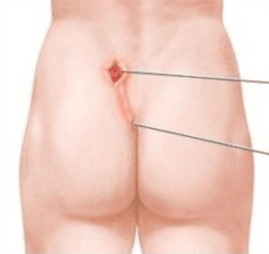
The pilonidal sinus is a cavity lined with epithelium from the inside; if it has a capsule, then they speak of a pilonidal cyst; when part of the cavity comes out, a pilonidal fistula is formed
This pathology is also called the epithelial coccygeal passage, which is directly related to the structure of the cyst. The coccygeal passage is an epithelial tube that does not cause any concern, however, with injury or violation of personal hygiene, the skin openings become blocked. As a result, the inflammatory process begins, the internal epithelium is damaged and an abscess is formed.
In this case, the following symptoms appear:
- tailbone hurts, especially when trying to sit up;
- in the region of the sacrum, swelling and redness occurs;
- the local and general temperature rises;
- purulent contents can be secreted through the sinus opening.
Teratomas and other neoplasms
A teratoma is a tumor that can be benign or malignant. In the sacrococcygeal region, it occurs most often and can grow up to 30 cm. In most cases, these neoplasms are detected even before the birth of a child, during ultrasound, and are removed in the first six months of a newborn’s life.
In adults, sacrococcygeal teratomas are very rare and slow in growth. However, the tumor can become infected or malignant, causing symptoms such as redness and swelling. Treatment is only surgical, in the presence of a malignant process, chemotherapy is performed.
Metastases from other organs – intestines, uterus and ovaries, bladder – can get into the coccygeal bone. The defeat of any segment of the spine leads to the occurrence of spontaneous fractures, rapid fatigue, and a decrease in body weight. In addition, pain during the development of cancer is not relieved by analgesics, there is a prolonged increase in body temperature to subfebrile values.
Hemorrhoids
Hemorrhoids are the inflammation, enlargement and tortuosity of superficial veins that form nodes closer to the rectum and anus. The disease develops gradually and is characterized by a feeling of heaviness and itching, bleeding from the rectum, prolapse of venous nodes. Pain with hemorrhoids in the overwhelming majority of cases is very strong, excruciating and radiates to the nearby areas – the tailbone, pelvic bones.
The perineal area can be especially painful during and immediately after bowel movements. It is during the trip to the toilet that bleeding is observed – usually of a scarlet color. Thrombosis and necrosis of hemorrhoids, as well as bleeding associated with them, are especially dangerous.
Rectal cancer
One of the reasons why the tailbone hurts may be a malignant neoplasm in the rectum. The tumor of this localization is called colorectal and occurs in about half of all cases of gastrointestinal cancer. The symptoms of colorectal cancer are quite diverse, but pain under the coccyx occurs only when the tumor grows outward. Acute pain syndrome torments mainly at night and does not depend on body position.
A malignant tumor is accompanied by other symptoms:
- losing weight with regular meals;
- bleeding from the rectum, often with clots;
- rapid fatigue;
- increased body temperature up to 37 °.
Intestinal disorders are also common in rectal cancer, especially in the early stages. Patients complain of alternating constipation and diarrhea, bloating and false urge to defecate. The person feels that the stomach ached, while it is not possible to determine the source of the pain. Along with this, there is a need to urgently go to the toilet, which turns out to be ineffectual. After taking antispasmodics, everything goes away, but it can be repeated up to several times a day.
Obesity
Provided that the body mass index in women is more than 27.4, in men it exceeds 29.4, the likelihood of developing coccygodynia increases significantly. Due to too much weight, the pelvis in a sitting position is not positioned correctly, and this leads to a subluxation of the coccyx. Therefore, with obesity, the lower back and tailbone often hurt.
Idiopathic pain
Often, coccygodynia develops for unknown reasons. It happens that such symptoms bother, and then disappear on their own. In some cases, the pain becomes chronic. In this case, drugs are prescribed for pain relief, physiotherapy for prevention.
Piriformis syndrome
This syndrome occurs when the sciatic nerve is pinched in the piriform opening, a slit between the piriformis muscle and the sacrospinous ligament. Most often it is associated with pathologies of the spinal column – osteochondrosis, hernia, spondyloarthrosis, etc. The cause may be traumatic injury, muscle overload, inflammation and oncological processes in the femur or sacral bone.
Piriformis syndrome affects almost half of patients with sciatica
The leading symptom of piriformis syndrome is a pulling, aching pain in the leg along the nerve, sometimes patients are worried about dull cerebral pain in the lower back and in the coccyx. There is an increase in pain syndrome during movements – walking, raising the affected leg, squatting or trying to cross legs. When the hips are extended to the sides from a sitting or lying position, the pain is reduced. The painful focus is in the middle of the buttock, but gradually the pain spreads down the leg and reaches the foot itself. Sharp lumbago is possible, which is felt in the thigh and below.
During pregnancy
During the period of waiting for a child, the female body experiences an enormous load. The location of the pelvic bones changes, there is pressure on the internal organs. Among the causes of pain during pregnancy, there are also:
- anal fissure;
- infectious in the uterus or fallopian tubes;
- changes in hormonal levels;
- tension of muscle fibers;
- deficiencies in nutrients such as calcium and magnesium;
- renal failure.
After childbirth
Many women experience coccyx pain after pregnancy and childbirth. The reason for this is the possible injury of the coccyx itself or nearby organs during labor. There is a high probability of injury if a woman previously had a load or fall on the tailbone.
Attention! An undetected tailbone crack during childbirth can become a fracture!
Coccyx pain for several weeks after childbirth is normal. When pain appears, it is important to exclude physical activity, sit less. You can do ball exercises, wear a corset to support your spine, and apply heat compresses. If the pain persists for more than three weeks, you need to see a doctor to determine the cause. Complex treatment, includes medicines, massage, physiotherapy exercises.
After the fall
Pain in the tailbone can be associated with a blow or fall, even if a long time has passed since its moment. Most often, microtrauma of the tailbone due to a blow can occur when ice falls, sports activities, riding a bicycle or a horse. In such cases, painful sensations may not be felt immediately, but may arise after a lapse of time.
After a long trip
Pain in the tailbone may appear during long trips – driving or sitting in transport for a long time in one position. To avoid pain, you need to get used to sitting in a chair, leaning on the back, especially with the lower back, fully loading the hips and creating an emphasis on two legs. Correct posture is essential. The back needs good support, so a thin roller is usually placed between the lower back and the chair. With its help, the vertebral bend is preserved. From time to time, at least 2-3 hours later, it is helpful to take a break to warm up.
Important! Make stops on long journeys while driving or on the bus! Light gymnastics will help relieve tension.
Sedentary work
Sitting in an office chair for an eight-hour day can also cause coccygodynia. To avoid this, it is necessary to move your legs at least a little during work, turn your back, so the heaviness in the muscles will go away. But if the head is tilted forward or the trunk is bent, the body becomes numb quickly. When working at a computer, it is more convenient not to move the body to the table, but, keeping your back straight, put a pillow.
They cause considerable discomfort. First of all, with the help of various types of diagnostics, it is necessary to determine the cause of the pain. If it is not found out and eliminated, then periodically the pain will return. Most cases of tailbone pain are treatable without surgery. So, therapeutic massage and physical education are considered effective, aimed at restoring normal blood circulation in the coccyx area. During exacerbations, it is important to take pain relievers and try to ensure bed rest. If, nevertheless, one cannot do without “gatherings”, it is better to do it on soft pillows.
During leisure and recreation
Periodic change of position in the chair will help to prevent pain in the lower part of the spine during many hours of vigil in front of the TV, giving the back good support in the place of its bend.
When reading a book, it is recommended to place a tilt stand underneath it.
During sleep, the bed should be firm, especially if the person is overweight. Usually, you can limit yourself to a thick mattress or foam covering 5-8 cm thick.
The tailbone hurts when you sit and get up
The main cause of pain in the coccyx when standing up is trauma or surgery in the pelvic region. An uncomfortable chair, sedentary work, or disruption of blood supply to the sacrum can cause severe discomfort. There may be many other reasons.
Before prescribing treatment, it is important to decide why the tailbone hurts. This may be due to other more serious diseases. And they are the ones who will require treatment. Basically, the problem of pain in the coccyx area is solved by traditional methods of treatment without surgery. Treatment includes a set of necessary measures: massage, exercise therapy, physiotherapy, taking painkillers, providing peace to the patient, manual therapy.
Tailbone contusion
Coccyx contusion is one of the most common causes of pain, diagnosed in people of any age. Violation of the skin in this case rarely occurs, and therefore it is not always possible to externally determine the bruise. Injury occurs when a person falls on the gluteal region. At the same time, the pain develops severe and sometimes can even lead to a stupor for several minutes and the inability to move. In case of injury, at first, a compressive effect is exerted on the tissue, which arises from the effect of the traumatic object on the tissue. Further, the pain persists due to pressure on the tissue of the hematoma, which is formed due to damage to small vessels.
The main symptoms of the disease are:
- pain of varying strength radiating to the spine (back in the coccyx area hurts);
- swelling in the area of damage;
- bruise;
- Difficulty moving
- pronounced increase in pain when sitting;
- pain that radiates to the legs after a long stay standing;
- pain in the injured area during sex that occurs in women and men;
- pain during bowel movements.
Treatment is carried out by a physician. The patient is required to bed rest with a position on the side
It is necessary to turn from side to side regularly and very carefully. As tissue regenerates, bed rest is canceled
Physiotherapy and medications are necessarily prescribed for therapy.
Pain after injury
tailbone pain
Usually, pain in the coccyx area occurs immediately after injury. But in some cases it can be slightly pronounced and quickly passing, and after a few years, when the patient has already forgotten about the injury, strong, burning pains suddenly appear.
Pain in the tailbone, combined with pain in the lower back, sacrum
With osteochondrosis, a cyst of the spine in the lumbar or sacral region, a combination of pain in the coccyx with pain in the lower back, in the sacrum is characteristic. In this case, the main complaints of the patient are back pain, and along the way – that the pain “gives” to the tailbone.
The same clinical picture is observed when nerve endings are pinched in the lumbar and sacral spine. Infringement of the sciatic nerve (sciatica) is accompanied by burning, sharp pain in the coccyx or above it.
Lumbar and sacral pains are accompanied by pain in the coccyx also with hemorrhoids, diseases of the rectum.
Pain in the tailbone when bending over
Bending pains are usually the result of chronic inflammatory processes in organs located near the coccyx (in the intestines or bladder, in the uterus and its appendages).
Pain in the tailbone when bending occurs when the patient has the following diseases:
- dysbiosis;
- colitis;
- sigmoiditis;
- cystitis;
- adnexitis;
- endometritis, etc.
Coccyx pain when sitting
Athletes – cyclists and people involved in equestrian sports complain of pain in the tailbone when sitting. They have a different cause of pain: microtrauma of the coccyx that occurs when practicing these specific sports.
Pain in the coccyx while sitting is possible in women after childbirth, when it is deformed (excessive extension of its intervertebral joints).
Finally, pain in the coccyx region that increases when sitting is characteristic of the coccyx dermoid cyst. A dermoid cyst is a congenital developmental anomaly, consisting in the formation of a cavity inside the tailbone, filled with skin tissue with growing hair.
Aching and pulling pain in the tailbone
Aching pain in the tailbone can occur with inflammation of the internal genital organs (with prostatitis or prostate adenoma in men and with inflammation of the ovaries and fallopian tubes in women).
A pulling pain in the coccyx is an additional symptom of osteochondrosis of the lumbar or sacral spine. Sometimes it occurs with hemorrhoids, as well as with prolonged sitting on the toilet due to frequent constipation.
Pain in the tailbone in men
In men, pain in the tailbone can be caused by the so-called “jeep sickness”. This disease occurs with frequent driving on unsprung vehicles (tracked tractors, in the army – on tanks, armored personnel carriers). The load on the tailbone when riding this technique is excessive. It can cause inflammation of the coccygeal passage, or coccyx cysts. This stroke, or cyst, is a hollow tube that runs under the skin from the end of the tailbone and ends blindly.
Inflammation of the coccygeal passage is called “jeep disease”. If the inflammation turns into a purulent stage, a fistula is most often formed – pus breaks out. Treatment is only surgical.
Characteristics of pain
Depending on the cause that caused the pain, the nature of the sensations differs. Therefore, the doctor, focusing on the symptoms, can already draw conclusions about the nature of the disease. The information presented in the table is important for differential diagnosis, quick determination of patient management tactics and the appointment of effective coccyx treatment.
| Cause | Characteristics of pain, symptoms |
| Injury | History of bruising or falling. Acute pain syndrome. In the long term, aching sensations. |
| Hemorrhoids | Pain occurs during bowel movements or straining. Are accompanied by bleeding or loss of nodes from the anus. |
| Adenomyosis | Coccygodynia is permanent. It gets worse during menstruation. |
| Pilonidal disease | The lumbar region and coccyx becomes edematous, hyperemic. The pain is very pronounced, unbearable. The general and local temperature rises. |
| Tumor formations of various localization | The manifestations of compression by the volume of the tissue of the primary affected organ come to the fore. The tailbone can hurt constantly and not give in to pain relief. Then the prognosis is unfavorable. Decreases body weight. |
| Osteochondrosis | The pain syndrome intensifies when standing up and straightening the back. Stiffness of movement is characteristic. |
| Piriformis syndrome | Pain in the left or right leg, aching or burning. It spreads from the middle of the buttock down the lower leg with irradiation to the groin and tailbone. |
Diagnosis of diseases
To answer the question of what to do if the tailbone hurts, it is necessary, first of all, to carry out a complete diagnosis. A large number of related specialists are involved – gynecologists, surgeons, andrologists, oncologists, neurologists, nephrologists, as well as general doctors – to determine why the tailbone hurts.
There is a list of necessary diagnostic procedures that allows you to determine what causes the tailbone to hurt. First of all, these include:
- a snapshot of the lumbosacral spine in several projections,
- tomographic examination of the back,
- ultrasound examination of the abdominal cavity and small pelvis to exclude gynecological pathology,
- rectal examination with a finger in men,
- vaginal examination in women,
- blood for the content of biomarkers.
What pains can be treated at home?
Painful symptoms in the tailbone are not always the result of minor injuries that can be eliminated using folk remedies. If during the examination it is established that pain in the coccyx is the result of a bruise or a postoperative symptom, then the doctor may recommend the independent use of external ointments, rubbing with tinctures, gymnastics or therapeutic baths.
However, the detection of fistulas, cysts or fractures in this area cannot be cured by rubbing and compresses alone.
A long course of treatment with the use of medicinal anti-inflammatory and analgesic drugs will be required in order to prevent the likelihood of a worsening of the condition or improper fusion of the damaged areas of the spine.
How to reliably diagnose an ailment
Symptomatic manifestations of coccyx osteochondrosis are similar to other diseases. To reliably diagnose the pathology, the patient will need to undergo a set of examinations.
See also: Fingers go numb what to do and how to treat? 7 methods
The doctor is engaged in the diagnosis of coccygodynia based on the following studies:
- Analysis of the medical history.
- Physical examination of the patient, in which rectal and vaginal examinations are performed, palpation of the lower back, coccyx.
In addition, the diagnosis of osteochondrosis includes laboratory and instrumental studies. Laboratory tests include: a general blood test (helps to identify anemia, leukocytosis), biochemical (helps to assess the functioning of the liver, pancreas, the content of important trace elements), urine analysis (helps to assess the functioning of the genitourinary system), feces analysis (helps to assess the work of the gastrointestinal tract). Instrumental studies of coccyx osteochondrosis include abdominal ultrasound, colonoscopy, radiography or MRI.
How to treat a tailbone at home?
Elimination of painful manifestations involves the appointment of anti-inflammatory drugs. These are pills, ointments, suppositories. Indomethacin, Diclofenac, Ibuprofen have proven themselves well. Their disadvantage is that it is recommended to apply no more than 5 days.
In addition to using medications, treating the tailbone at home after visiting a doctor involves following his simple prescriptions:
-
Ensuring the rest of the injured area with adherence to bed rest. It is recommended to lie on your stomach for a while. This gives complete rest to the tailbone and reduces pain.
-
Elimination of any physical activity associated with lifting weights, jogging or other strength exercises.
-
A hot bath and compresses with a warming effect are categorically contraindicated. This provokes the activation of inflammatory processes.
It is recommended to apply only cold.
-
Sitting in a chair for a long time is not recommended. However, if necessary, a special round roller can be used to relieve stress on the damaged tailbone. Doing a little warm-up will also help relieve pain.
-
It is not recommended to conduct massage sessions for pain in the coccyx.
Following these tips can reduce the stress on the coccyx and reduce pain.
Consequences of not healing
The drugs are selected depending on the diagnosis (a short medical report on the existing disease (injury), deviation in the patient’s state of health or on the cause of death). In case of inflammation, it is necessary to relieve acute pain (physical or emotional suffering, excruciating or unpleasant sensation), to reduce sensitivity with the help of non-steroidal drugs. If the cause of discomfort is indigestion, laxatives are recommended to the unhealthy person to improve bowel movements. For injuries, local anesthetics in the form of ointments and creams are most effective.
To reduce pain (an experience associated with true or potential tissue damage) and inflammation, doctors choose nonsteroidal anti-inflammatory drugs. They are recommended if the cause of unpleasant feelings lies in the exacerbation of sciatica, arthritis, osteochondrosis, back injury.
| Product name | Method of administration and dose |
| Ibuprofen | In acute pain (experience associated with true or potential tissue damage) 300-400 mg 3 times a day (not more than 1600-2000 mg). The longest course is 7 days. |
| Diclofenac | Injections of 75 mg 2 times a day. Pills not more than 7 days, 50 mg 3 times a day. |
| Ketoprofen | In pills, take 100 mg 3 times a day (duration is not more than 6 days). Intramuscular injections – 1 ampoule only to relieve acute pain syndrome. |
| Paracetamol | Depending on the diagnosis (a short medical report on the existing disease (injury), deviation in the patient’s state of health or the cause of death), take 100–250 mg of the product 3 times a day. The healing period is 5-7 days. |
Non-steroidal drugs can be selected in the form of rectal suppositories (Analdim, Diclofenac, Nurofen). They do not act on the gastric mucosa, they have a minimum of contraindications.
Coccygodynia with acquired constipation disappears when the main prerequisites are eliminated.

 Recommended for healing:
Recommended for healing:
- Microclysters Mikrolax and Norgalax. Used as an “ambulance” for heaviness in the intestinal tract, cause the urge to defecate in 20-30 minutes.
- Drops with a laxative effect of Picolax, Guttalaks, Regulax. Used 1-2 times a day, 15-20 drops.
- Osmotic preparations for softening fecal stones Forlax, Sorbitol.
To restore microflora and prevent constipation, drugs with bifidobacteria (Acipol, Linex) are used.
Local anesthetics
With arthrosis and osteochondrosis, pain can be relieved with the help of local anesthetics.
They need to be applied and rubbed into the coccyx area with a special applicator:
No less effective are ointments based on a natural base: royal jelly, bee or snake venom (Traumeel, Apizatron).
Special pads
If a lady has a very sore tailbone from sitting at a desk for a long time, doctors advise purchasing a special orthopedic pillow. It redistributes the load in the most moderate way, relieves pressure on the pelvic bones, simplifies nasty feelings. It has the shape of a torus, square or rectangle.
Among the advantages of the device:
- made of non-hazardous materials (latex, polyurethane foam);
- provided for a computer and regular chair, car chair;
- are simply erased and cleaned.
The pads are recommended for the prevention of exacerbations of hemorrhoids, tailbone bruises, recovery after hip surgery. They relieve the tone in inflammation of the sigmoid colon, polyps, diseases of the reproductive system.
The doctor examines, palpates the painful area, prescribes a number of research works: X-ray, ultrasound (Ultrasound examination – a non-invasive examination of the human or animal body using ultrasonic waves), MRI (Magnetic resonance imaging – a tomographic method of examining internal organs and tissues using a physical phenomenon nuclear magnetic resonance), CT (Computed tomography – a method of non-destructive layer-by-layer examination of the internal structure of an object). Based on the conclusions, it identifies the cause of the pain (an experience associated with true or potential tissue damage) in the coccyx area. The outcome of healing directly depends on the elimination of the background of pain (experience associated with true or potential tissue damage). If inflammation is found (see Table: Inflammation is a complex local reaction of the body to injury), medications are prescribed. Any neoplasms require surgical intervention, in the case of a malignant tumor (tumor (syn. Neoplasm, neoplasia, neoplasm) is a pathological process represented by a newly formed tissue), an oncologist’s consultation is needed. In case of injury to the tailbone, rectal reduction or surgery is performed.
If it is established that pain (physical or emotional suffering, excruciating or unpleasant sensation) is associated specifically with the coccyx, the usual course of healing is applied, including the use of pharmaceuticals, physiotherapy, and the introduction of special devices.
Non-steroidal anti-inflammatory drugs. They are prescribed to relieve pain and return the patient to normal life. There are a lot of NSAIDs: Ibuprofen, Diclofenac, Piroxicam. They all perfectly relieve pain (physical or emotional suffering, excruciating or unpleasant sensation), but they have one significant contraindication: a negative effect on the digestive tract (the gastrointestinal tract is the digestive system of the organs of real multicellular animals, designed for processing and extracting nutrients from food ). It is not allowed to take them for more than 5 days and the daily dose should not be exceeded.
Laxatives Quite often, patients complain that stool problems have appeared. Mental constipation manifests itself due to the horror of the discomfort that appears when straining. The use of mild laxatives will help to cope with this.
Pain relief injections. Local anesthetics are injected into the tailbone area when the pills are not working. As a result of the injection, the spasm of the tissues that surround the tailbone is removed. From time to time, injections help cope with coccygodynia.
Special pads. Since pain (physical or emotional suffering, excruciating or unpleasant sensation) increases when sitting, experts advise purchasing a special pillow for sitting with pain in the coccyx in the form of a donut or a circle. They are sold in orthopedic salons (pharmacies). This is a good way to prevent pain (physical or emotional suffering, excruciating or unpleasant sensation) from returning.
Physiotherapy. After you have managed to relieve inflammation (Inflammation is a complex local reaction of the body to damage), you can start physiotherapy. More often, laser, magnetic healing, paraffin applications are used. For patients with acquired pain (an unpleasant sensory and emotional experience associated with actual or potential tissue damage or described in terms of such damage) in the tailbone region, such procedures are more beneficial.
Coccyx removal. The operation is resorted to very rarely, if the most severe pain (an experience associated with true or potential tissue damage) is not relieved by any products, the patient’s life condition is aggravated. The coccycotomy operation is performed according to the hospital criteria. After the operation, severe rehabilitation is required in order to exclude infectious burdens.
When the doctor proves the diagnosis (a short medical report on the existing disease (injury), deviation in the patient’s state of health or the cause of death), during and after the passage of healing, ordinary rules must be followed so as not to load the tailbone.
- To prevent constipation, foods containing fiber are added to the diet.
- When forced to sit for a long time, be sure to use a special pillow.
- It is recommended to limit the time spent in a sitting position.
Before you start healing, you need to know which doctor to contact if your tailbone hurts. After diagnosis, the proctologist directs the patient to a neurologist, gynecologist, doctor. This is necessary to determine the clearest diagnosis (a short medical report on the existing disease (injury), deviations in the patient’s state of health or the cause of death), in order to choose an effective course of therapy (therapy is a process for removing or eliminating symptoms and manifestations of the disease). Then the specialist, painstakingly examining and asking about the symptoms, about early injuries, performed operations, makes a diagnosis (medical report on the existing disease) and prescribes healing.
Some unhealthy people cannot be diagnosed (a medical report on the existing disease), then they begin symptomatic healing. Therapy (Therapy from the Greek. [Therapeia] – treatment, recovery) contains rest, pain medications, massage, manual and magnetic therapy (therapy is a process to relieve or eliminate symptoms and manifestations of the disease), physiotherapy, physical exercise. If concomitant diseases are identified, they will certainly be cured.
For women in a position where the tailbone hurts when standing up or sitting, it is more difficult to prescribe healing, because almost all drugs are contraindicated for them. X-rays are also excluded. If the pain (physical or emotional suffering, excruciating or unpleasant sensation) is moderate, then nonsteroidal anti-inflammatory drugs are prescribed. With powerful pains, he is able to make a novocaine blockade. If you are allergic to novocaine, then the product is substituted for lidocaine, kenalog, diprospan, hydrocortisone.
Finger massage of the rectum and pelvic floor muscles is excellent, especially with their spasm. Manual therapy (Therapy from the Greek [therapeia] – treatment, recovery) improves blood circulation (blood circulation throughout the body), destroys blood stagnation (the internal environment of the human and animal body), relieves muscle spasms and helps restore the volume of movement of the tailbone. She is also prescribed for pain in the tailbone and lower back.
Physiotherapy uses:
- ultrasound,
- laser therapy,
- UHF,
- electrotherapy (electrode is inserted),
- diadynamic currents,
- darsonval,
- applications with paraffin.
From traditional medicine, the action of a magnet is distinguished, compresses with valerian, blue clay, rubbing with radish juice, rubbing in fir oil. If therapeutic healing for dislocation or fracture of the tailbone does not help, then it is removed. This happens occasionally, during the most languid stages.
Lack of therapy (therapy is a process for the removal or elimination of symptoms and manifestations of the disease) can cause consequences:
- Persistent pain syndrome (a set of symptoms with a common pathogenesis)
- Paresis, paralysis of the legs;
- Decrease in motor ability, flexibility of the sacrum, lower back.
Pain (physical or emotional suffering, excruciating or unpleasant sensation) in the tailbone while sitting can lead to languid consequences. With some pathologies, there may be the development of violations in the work of the internal organs of the small pelvis, tummy (its lower part).
Which doctor should I contact for coccyx pain?
Pain in the coccyx and in the area around the coccyx can be caused by a wide range of various diseases and conditions, therefore, with a pain syndrome of this localization, a person will have to turn to different specialists. The choice of a specialist depends on the accompanying symptoms and the possible cause of pain in the coccyx, since it is these factors that determine which physician is responsible for treating the disease that led to pain in the coccyx.
So, if the pain in the tailbone is provoked by an injury, for example, a fall on the bottom, a blow to the tailbone, excessive extension of the tailbone during childbirth, hemorrhage into the subcutaneous fat around the tailbone during childbirth, etc., then you should consult a traumatologist (sign up) or surgeon (sign up )… Pain in the tailbone of a traumatic nature is sharp, acute, can exist continuously or appear sporadically, aggravated by walking and sitting. The painful sensation itself can be localized both in the coccyx itself, and around it, for example, under it, above, below, on the side. The main distinguishing feature of traumatic pain in the tailbone is the fact of his injury, which a person usually remembers.
If the pain in the coccyx is caused by diseases of the spine (for example, osteochondrosis, displacement of the intervertebral discs, entrapment of nerve endings, etc.), then it is necessary to consult a vertebrologist (sign up). If for any reason it is impossible to get an appointment with a vertebrologist, then you should contact a neurologist (sign up) ,neuropathologist (sign up), traumatologist, chiropractor (sign up ) or osteopath (sign up ). Pain in the coccyx, caused by diseases of the spine, is of a pulling-aching character, combined with pain in the sacrum and lower back, and in many people the painful sensation only gives off to the coccyx, and is not localized there. In addition to pain in the coccyx, diseases of the spine are characterized by headaches, dizziness, pain in the affected spinal column, increased or weakened sensitivity in the legs and arms, which make it possible to distinguish them from other causes of pain in the coccyx.
If the pain in the tailbone is due to diseases of the muscles and nerves of the pelvic floor (for example, sciatica), then you should consult a neurologist or chiropractor. With pain caused by pinching of the nerves, the pain is acute, sharp, strong, burning, does not subside over time, at the same time localized in the tailbone, lower back, sacrum and leg. Moreover, the pain is most often felt slightly higher or in the very upper part of the tailbone.
If pain in the coccyx is caused by diseases of the rectum and sigmoid colon (for example, hemorrhoids, proctosigmoiditis, proctitis, anal fissures, colitis, etc.) or deformities of the anus due to operations or injuries, then you should consult a proctologist (sign up )… In diseases of the rectum and sigmoid colon, pain in the coccyx has a pulling-aching character, combined with pain in the sacrum and lower back, as well as in the anus, can be localized not only in the coccyx, but also under it, often suddenly arises when the body is tilted forward. And with deformities of the anus due to operations and injuries, pain in the coccyx occurs when standing up, and is localized as if under the coccyx.
If pain in the tailbone is associated with prolapse of the perineum or operations on the abdominal organs, you should consult a gynecologist (sign up )or a surgeon, since in such a situation, surgical treatment is necessary. Pain after operations on the abdominal organs occurs in the coccyx while standing up from a sitting or lying position, and may be localized not so much in the coccyx itself, but felt under it.
If the pain in the coccyx is caused by a cyst or bone pathology (for example, osteoporosis, joint deformity, etc.), then you should consult a traumatologist or surgeon with advice from an endocrinologist (sign up ). Pain of this origin is usually only given to the tailbone.
If the pain in the tailbone is due to the habit of sitting in the toilet for a long time and pushing against the background of constipation, then you should contact a gastroenterologist (sign up ) and a nutritionist (sign up). In this case, the pain in the tailbone is pulling-aching.
If pain in the coccyx is caused by diseases of the genitourinary tract, then women should consult a gynecologist, and men should consult a urologist (sign up )… Pain in the coccyx caused by diseases of the genitourinary tract (cystitis, adnexitis, endometritis, prostate adenoma, etc.), usually occurs when the body is tilted forward and has a pulling-aching character, combined with pain in the lower abdomen, pain during urination, pathological discharge from the genitals, etc.
Coccyx pain can be triggered by wearing tight clothes, stress, strong emotions, or the habit of constantly sitting on soft seats. In such situations, you need to contact a chiropractor or osteopath and, of course, eradicate the factor that causes pain.
There are pains in the tailbone of unknown origin, when it is not possible to identify a clear causative factor, and in this case it is recommended to contact a vertebrologist, chiropractor or osteopath.
Thus, for coccyx pain, it may be necessary to contact one of the following specialists:
- Vertebrologist;
- Chiropractor;
- Osteopath;
- Traumatologist;
- Surgeon;
- Proctologist;
- Gynecologist;
- Urologist.
Diagnostics of pathologies
If the tailbone hurts, you should consult a physician. He will conduct an examination and schedule an examination. If not necessary, the therapist will refer you for a consultation to a narrow specialist (vertebrologist, neurologist, proctologist, surgeon, urologist, gynecologist).
Inspection
In order for the doctor to see the sacrococcygeal area, the patient must lie face down on the couch, legs apart, shoulder-width apart. A small roller is placed under the abdomen to lift the pelvis and relax the gluteal muscles. Inspection may reveal:
- crack in the anus;
- external hemorrhoids;
- paraproctitis;
- external fistula;
- the presence of edema and hematoma.
Palpation in the area of the sacrum and coccyx should normally not cause pain.
If the examination is carried out by a proctologist, then he can do a digital examination of the rectum. To do this, the patient takes a knee-elbow position, and the doctor inserts a finger into the anus. Such a study allows you to detect internal hemorrhoids, a change in the wall or the presence of a tumor of the rectum, muscle spasm or weakness of the sphincter of the anus, paraproctitis.
X-ray examination
Pictures of the sacral and coccygeal region are carried out in frontal and lateral projections. X-ray reveals the presence of traumatic or degenerative changes, curvature of the spine, metastases.
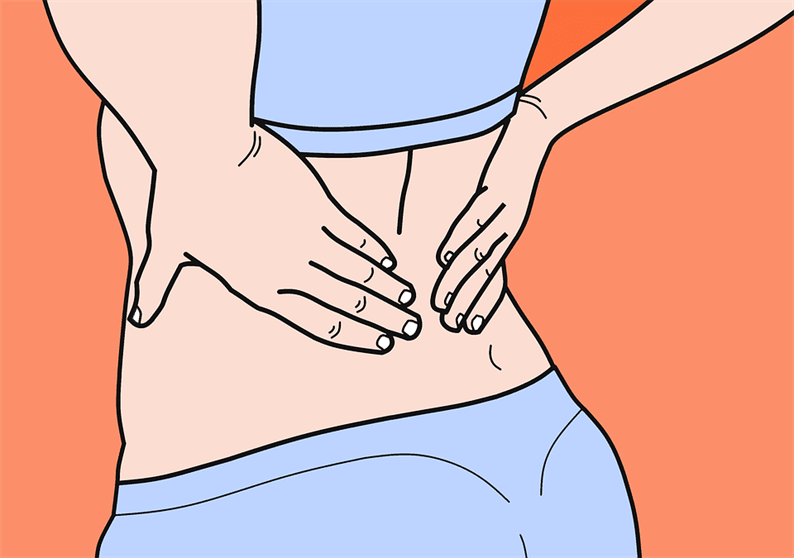
In order for the study to be informative, the day before the patient should not eat food that promotes gas formation (fruits, vegetables, dairy products)
Computed tomography (CT)
This method allows you to obtain a layer-by-layer image of anatomical structures using a tomograph. Unlike conventional X-rays, CT can evaluate not only bone structures, but also muscles and cartilage.
Magnetic resonance imaging (MRI)
The method is accurate, informative and does not bear radiation exposure to the body. Allows not only to identify changes in the spine, but also to assess the state of blood vessels, nerve bundles and soft tissues.
Treatment for pain in the tailbone
For effective treatment of coccygeal pain, it is paramount to determine the cause of their occurrence. As a rule, pain in the coccyx area is of a secondary nature, therefore, having identified the cause, one should begin with the treatment of the primary disease.
Coccyx pain treatment includes:
- drug treatment;
- blockade for pain in the tailbone;
- physiotherapy;
- massage;
- acupuncture
- strict bed rest;
- surgery.
Drug treatment
Non-steroidal anti-inflammatory drugs
With pain in the tailbone, non-steroidal anti-inflammatory drugs effectively help, with the help of which it is possible to reduce not only pain and temperature, but also eliminate inflammation.
Non-steroidal anti-inflammatory drugs are indicated in the following cases:
- diseases of the joints and spine of an inflammatory nature (rheumatoid arthritis, sciatica, osteoarthritis and others
- pain of various etiologies (postoperative and post-traumatic pain, neuralgia, headache, myalgia and others
- fever (increased body temperature) with various infectious diseases.
| Name of the drug | Mode of application |
| Ibuprofen |
|
| Aspirin |
|
| Diclofenac |
|
| Ketoprofen |
|
| Piroxicam |
|
Muscle
relaxants Muscle relaxants are a group of drugs whose action is aimed at relaxing spasmodic muscles. Due to the removal of muscle tension in the patient, pain is significantly reduced and the healing process is accelerated.
| Name of the drug | Mode of application |
| Midocalm | In the form of tablets, the drug is used at 50 mg three times a day, if necessary, the dose can be increased to 150 mg two to three times a day (maximum daily dose is 450 mg ). |
| Baclofen | For the first time, it is recommended to take 5 mg three times a day, after which every three days the dose of the drug is gradually increased and brought to 30 – 75 mg per day (the maximum daily dose is 100 mg ). |
| Tizanidine | Take orally 2-4 mg three times a day (maximum daily dose 36 mg ). |
Note. The drug, dosage and duration of treatment are individually selected by the attending physician, depending on the disease, clinical signs, as well as the available indications and contraindications.
Blockage for pain in the tailbone
| Indications | Methodology | Contraindications |
| Peri-coccygeal blockade is performed to relieve pain. Also, this procedure has an antispasmodic and anti-inflammatory effect. If pains recur after the procedure, the blockade can be re-introduced. As a rule, the blockade of coccygeal pain is carried out in combination with the intake of anti-inflammatory drugs, muscle relaxants, as well as physiotherapy. | The essence of the blockade is to inject an anesthetic solution (novocaine, lidocaine) into the most painful area to relieve muscle spasm and relieve pain. |
|
Physiotherapy
Physiotherapy is now widely used to improve health and accelerate the healing process. During physiotherapy, a certain area and depth of tissues are affected, which makes it possible to eliminate signs of inflammation, edema and pain.
When carrying out physiotherapy, the affected area of the body can be influenced by:
- heat;
- cold;
- high-frequency current;
- ultrasonic vibrations;
- magnetic field, etc.
| Procedure type | Description of the procedure | Mechanism of action |
|
Darsonvalization |
This is a physiotherapeutic method based on the impact on the body of high-frequency current (frequency 110 kHz) and voltage (25 – 20 kV ). There are several types of devices and attachments for this procedure. For pain in the coccyx, mushroom or rectal (rectal darsonvalization) electrodes are used. The strength of the apparatus is set individually, depending on the clinical signs and available indications. The procedure takes fifteen to twenty minutes. The course of treatment includes twenty procedures that are done daily or every other day. After the end of the treatment session, the patient may experience slight reddening of the skin, which does not bring discomfort and disappears during the day. | The current supplied through the electrode, acting on the coccyx area, causes spasm, and subsequently vasodilation. This effect improves microcirculation, reduces inflammation, and also has a bactericidal effect, inhibiting the vital activity of bacteria. It should also be noted that due to the improvement of blood flow in the affected area, the supply of oxygen to organs and tissues increases, which leads to an acceleration of the healing process. |
|
Ultrasound therapy |
It consists in influencing the body using ultrasonic vibrations (frequency from 800 to 3000 kHz ). This therapy stimulates metabolic processes, enhances immunity, and also improves tissue regeneration (healing ). When carrying out ultrasound therapy, the duration of the procedure will depend on the area of the field of influence. In most cases, the procedure lasts about five minutes; if several areas are affected, the session can last for ten minutes. The course of treatment includes ten to twelve procedures daily or every other day. | Ultrasonic waves penetrate tissues to a depth of seven centimeters. These fluctuations have a beneficial effect on the area of influence at the cellular level, improve local blood circulation and accelerate the healing and repair process of tissues (for example, nerves, cartilage tissue ). In addition, ultrasonic waves during treatment have anti-inflammatory and analgesic effects, as well as increase local immunity. |
|
Phonophoresis |
It consists in the fact that with the help of ultrasonic vibrations, drugs are injected into the body. Phonophoresis has an anti-inflammatory effect, stimulates immunity, and also activates metabolic processes. The duration of each procedure and treatment generally depends on the clinical picture and recommendations of the attending physician. On average, the course of treatment includes seven to twelve procedures. | During the procedure, the drug used, penetrating into the body, reaches the smallest vessels, capillaries, which allows the agent to effectively influence the cells of the affected tissues. As a result of exposure to ultrasound and drugs, blood circulation is improved, due to which oxygen enters the tissue in greater quantities, which speeds up the healing process. |
|
Diadynamotherapy |
It consists in the effect on the body of an electric current, the frequency of which is 50 – 100 Hz. The intensity of the supplied current during the session is selected individually. The duration of the procedure is on average six to ten minutes, the maximum duration can be twenty minutes. The course of treatment includes seven to eight procedures. | Diadynamic currents, penetrating into the skin, act on its receptors. Subsequently, the currents enter the central nervous system, from where they block the pain syndrome emanating from the pathological focus. By blocking impulses from the painful area to the cerebral cortex, diadynamic therapy has an analgesic effect. Also, the current used improves local blood circulation, has anti-inflammatory and antispasmodic effects. |
|
UHF therapy |
It consists in the effect on the human body of a high-frequency electric field with an oscillation frequency of 40.68 MHz (wavelength 7.3 meters ). During ultra-high-frequency (UHF) therapy, heat is generated in the tissues, and physicochemical processes are triggered, which lead to a speedy recovery of the patient. The duration of the procedure is on average five to fifteen minutes. The course of treatment includes ten to fifteen procedures that can be done daily or every other day. | Ultra-high-frequency therapy, acting on tissues, improves metabolism, lymph circulation and blood circulation, thereby accelerating the regeneration of the affected tissues. Also, this method increases local immunity, has anti-inflammatory and analgesic (analgesic) effects. |
|
Paraffin therapy |
It consists in the use of specially heated paraffin (52 – 55 degrees) for therapeutic purposes. During the procedure, the prepared paraffin is applied to the affected area of the body with a special brush. The applied wax should be one to two centimeters thick. Then an oilcloth and a blanket are applied to this area to keep warm. The duration of the procedure is 30 – 60 minutes (after the session, you need to rest for 30 minutes ). The course of treatment includes conducting from twelve to twenty sessions daily or every other day. | Paraffin application, due to the transfer of heat to the tissue, significantly improves local blood circulation, which accelerates the healing process of tissues, reduces muscle spasm, pain, and also has an anti-inflammatory effect. |
Massage
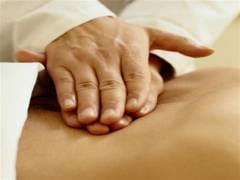 With pain in the tailbone, massage effectively helps. The massage relieves muscle tension, relieves pain, and improves blood flow to the affected area, which activates tissue regeneration processes. During the treatment procedure, the patient must take a supine position on a firm surface in order to exclude flexion in the lumbar region. In addition to the mechanical effect during the massage, special medicinal oils or warming ointments can be applied to enhance the therapeutic effect.
With pain in the tailbone, massage effectively helps. The massage relieves muscle tension, relieves pain, and improves blood flow to the affected area, which activates tissue regeneration processes. During the treatment procedure, the patient must take a supine position on a firm surface in order to exclude flexion in the lumbar region. In addition to the mechanical effect during the massage, special medicinal oils or warming ointments can be applied to enhance the therapeutic effect.
Despite the high efficiency of massage for coccygeal pain, it is necessary to consult with your doctor before performing it, as there may be certain contraindications (for example, purulent-inflammatory processes, malignant tumors, increased body temperature).
For pain in the tailbone during massage, the following techniques can be used:
- trituration;
- kneading;
- stroking;
- pressure;
- smoothing.
The number of procedures and the duration of the massage course are selected individually, depending on the diagnosis, clinical manifestations, as well as on the recommendations of the attending physician.
Acupuncture
 Acupuncture is a direction in medicine, which consists in the introduction of special needles at certain points on the human body. Ancient Chinese medicine claims that twelve meridians pass through the human body, and there are 360 active points on its surface, through which the energy “qi” (life energy) flows. After exposure to these points on the body with needles, pain syndrome decreases, immunity increases, sleep and psychoemotional state normalize.
Acupuncture is a direction in medicine, which consists in the introduction of special needles at certain points on the human body. Ancient Chinese medicine claims that twelve meridians pass through the human body, and there are 360 active points on its surface, through which the energy “qi” (life energy) flows. After exposure to these points on the body with needles, pain syndrome decreases, immunity increases, sleep and psychoemotional state normalize.
Strict bed rest
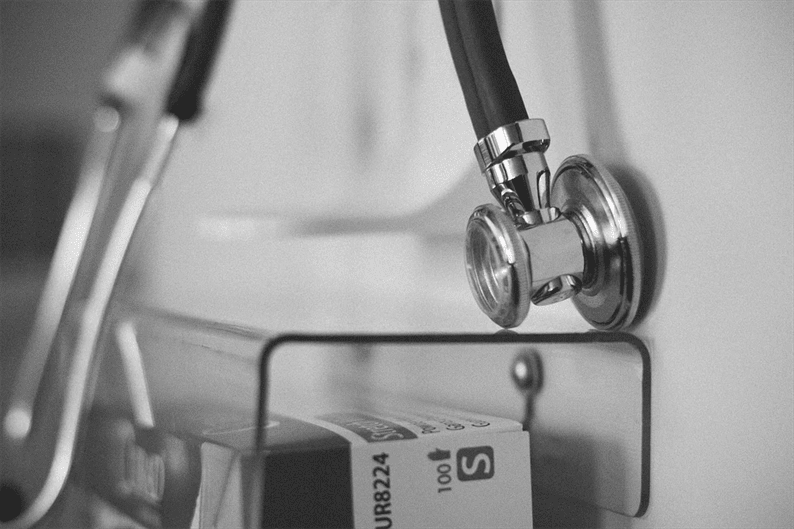 For tailbone injuries, strict bed rest is paramount as a treatment. In case of injury and dislocation, it is one week. Also, in case of dislocation, the deformity is reduced through the rectum.
For tailbone injuries, strict bed rest is paramount as a treatment. In case of injury and dislocation, it is one week. Also, in case of dislocation, the deformity is reduced through the rectum.
In case of a tailbone fracture, strict bed rest is from seven to ten days, and the general course of treatment lasts three to four weeks with the exception of any physical exertion.
Surgery
 An extreme measure in the treatment of tailbone injuries is surgery, in which the tailbone can be removed. Surgical treatment is resorted to in the case of non-union of the fracture of the coccygeal bones and when conservative methods have not brought the desired results.
An extreme measure in the treatment of tailbone injuries is surgery, in which the tailbone can be removed. Surgical treatment is resorted to in the case of non-union of the fracture of the coccygeal bones and when conservative methods have not brought the desired results.
Surgery is also an indication in the treatment of coccyx cysts. In the acute phase of inflammation, an operation is performed in order to open the abscess and drain the contents of the cyst. In the future, when a chronic fistula is formed, a second operation is indicated, which is aimed at eliminating the coccyx cyst.
NSAIDs (non-steroidal anti-inflammatory drugs)
Symptomatic pain management helps maintain a normal quality of life. A great variety of NSAIDs are sold in pharmacies, the most common of which are ibuprofen, indomethacin, diclofenac, piroxicam (see ointments for back pain). They all have similar side effects to one degree or another. The main one is the risk of gastrointestinal ulcers. Therefore, nonsteroidal anti-inflammatory drugs should not be taken longer than 5 days and the daily dose indicated on the package should not be exceeded.
Laxatives
Going to the toilet in a patient with coccygodynia turns into torture. Straining leads to increased discomfort. Fear of pain causes “psychological constipation.” The result is a vicious circle. Therefore, sometimes you have to use laxatives (preferably herbal), which will facilitate the act of defecation.
Local anesthetic injection
If pill pain relievers do not help, then local anesthetics are injected into the coccyx area. This is a painless procedure that allows you to relieve spasm of the surrounding tissues. As a result, coccygodynia can completely disappear.
Using special pillows
Pharmacies and orthopedic salons sell wedge-shaped or donut-shaped pillows. Their essence is the unloading of the coccyx area and the lack of contact with a hard surface. With true cocigodynia, this method is also considered the prevention of relapse.
Physiotherapy
All physical effects can be carried out only after the exclusion of an acute inflammatory process. They use laser, ultraviolet, magnetic treatment, paraffin applications and darsonvalization. This is especially useful for patients with chronic pain, in whom the spasm of the muscles surrounding the coccyx prevents recovery.
Coccyx removal
Coccycotomy (tailbone removal) is used in very rare cases. Only unbearable pain, a decrease in the quality of life and the lack of effect from other methods force surgeons to undergo surgery. The fact is that the postoperative period is associated with infectious complications. Therefore, coccycotomy is the last of all possible methods.
Home treatment
- Fresh burdock leaves, after washing, are applied in 5-6 layers to the sore spot.
- A solution of vinegar is mixed with honey in a 1: 2 ratio, the resulting mixture is rubbed into the tailbone area daily.
Attention! Honey is an allergen. Consult a physician before use.
- Among the medications, you can use a composition of 10 crushed tablets of analgin, 200-300 ml of alcohol, 10 ml of camphor alcohol and 10 ml of iodine. The resulting solution is infused for 21 days and used as a cream.
- One gram of mummy is bred with honey and used for medicinal purposes as an ointment, you can rub it.
- Arnica tincture in the amount of 20 drops is used as an effective remedy for relieving pain.
- A compress from freshly grated potatoes, wrapped in gauze, is applied to the sore spot.
- Healing decoctions from various collections of herbs, calendula, wormwood juice, as well as plantain and onion baths are suitable.
- For 15–20 minutes, massage gently in the area of pain in a clockwise direction with an ordinary magnet;
- Make a medicated ointment with 1 tablespoon of comfrey leaves and sunflower oil. The resulting mixture is boiled and then simmered over low heat. After straining, add vitamin E and a quarter glass of beeswax. The ointment is used 2 times a day as a compress.
- Decoction from 2 tbsp. tablespoons of geranium leaves are cooled and applied to the sore spot as a compress.
Attention! When treating geraniums, you need to be careful: in large doses, the plant is poisonous.
- A mixture of lavender with sunflower oil is infused for 2 weeks in a dark place and used as an ointment.
- Eating wheat germ will help strengthen your ligaments and reduce pressure on your pelvic bones.
- The infused solution on young potatoes can also be used as a grinding agent.
- Rosehip tea, taken by mouth, can help reduce inflammation and relieve pain.
- Also, various anti-inflammatory ointments are used to relieve pain. Doctors recommend drinking vitamins of group B, A, E and C, and for calming down – tincture or valerian tablets.
Physiotherapy
With pain in the coccyx area, exercise therapy can be useful as an additional type of therapy and prevention of exacerbations.
Exercise should be done more often, always after sleep and during your lunch break at work. Exercise will help activate blood flow in the coccyx and strengthen the pelvic muscles.
Exercise therapy – prevention and treatment of pain in the tailbone.
Exercises (cannot be performed in the acute period):
- while lying on a firm surface, pull your toes and hold the ball between your heels for at least 5 seconds. Repeat the exercise 8-10 times;
- while lying down, bend your knees and lift your pelvis. Tighten your pelvic muscles for a few seconds. Repeat several times;
- in the same position, try to squeeze the ball with your knees, while straining your abdominal muscles. Take a break and repeat the exercise;
- in a sitting position – curl forward and bend;
- while standing, make turns left and right, so the muscles of the lumbar spine are strengthened.
The number of repetitions of all exercises depends on the basic physical fitness of the patient. However, exercise should be done every day, gradually increasing the load. Limit your sitting position during the day. In order to speed up your recovery, it is recommended to repeat the exercises several times a day.
Possible complications
A constant, slow, but steady increase in the severity of pain in the coccyx indicates the spread of pathology. It affects healthy tissues, often provoking irreversible changes. The later the patient seeks medical help, the higher the likelihood of severe complications, often eliminated only by surgery.
Folk remedies
Any self-medication turns into a deterioration in the condition or the manifestation of an allergic reaction to the used folk recipes used without the appointment of a qualified specialist.
However, this does not detract from their positive impact. The main condition is the fulfillment of the doctor’s recommendations on the appropriateness of using this or that remedy.
Vishnevsky ointment
Liniment Balsamic according to Vishnevsky has antiseptic, anti-inflammatory, bactericidal and immunomodulatory effects. It is prescribed to patients with pain in the coccyx only if they are provoked by gynecological pathologies, hemorrhoids or skin lesions in the lower back. An external agent stimulates tissue regeneration, but does not show analgesic activity. Therefore, it is impractical to apply it to the tailbone.
Why is there pain in the coccygeal bone?
The combination of pain in the coccyx area is usually called coccygodynia. It occurs when exposed to provoking factors.
There are several reasons due to which there is pain in the tailbone:
- traumatic effects on the distal spine;
- connective tissue adhesions that occur after surgical interventions on the internal organs located in the lower abdomen;
- spinal pathology: osteochondrosis, intervertebral hernias, spondyloarthrosis, especially in the area of the lumbar and sacrum.
- inflammatory processes in the internal organs located nearby, in this case, the genitourinary system;
- diseases of the nervous system: for example, entrapment of the sciatic nerve;
- salt deposits;
- hypodynamic lifestyle;
- cyst or sinus tract in the coccyx area;
- anomalies in the development of the spinal column.
Trauma to the coccygeal bone causes severe pain. Feelings depend on the type of damage. With mechanical action, the pain can be constant or paroxysmal, dull or sharp, aching, pulling.
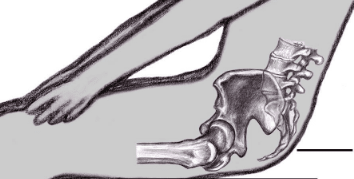
The severity of pain symptoms directly depends on the degree of injury to the tailbone. After surgical interventions on the internal organs of the lower abdomen, adhesions may occur, which cause unpleasant sensations in the coccygeal bone. Especially often, these pains occur when changing the position of the body.
When the spine is affected in the distal region, pain occurs in the coccyx. It can be a shooting or pulling sensation.
With various gynecological diseases: adnexitis, endometritis, painful sensations are projected onto the tailbone. To find out what exactly is the cause of pain and localization, you need to conduct a thorough survey, examination of the patient and prescribe additional methods for studying the problem area.
If pain occurs, it is recommended to see a doctor immediately.
Combined ointments
From pain in the coccyx resulting from injury, Indovazin ointment helps well. Its analgesic, regenerating and stimulating action is provided by indomethacin and troxerutin. The Menovazin solution and Menovazan ointment have similar properties.
Tinctures for pain relief from bruises
Traditional healers recommend from the beginning of spring to collect and put fresh medicinal raw materials in a dark glass container, pouring it with ordinary vodka. For tincture, flowers of marigold, chamomile, dandelion, St. John’s wort, coltsfoot, horseradish and plantain leaves are suitable. After replenishing the container, it must be left in a dark, warm place for a month. The resulting fragrant tincture is rubbed in for chronic pain in the coccyx up to 3 times a day.
Honey and vinegar
To prepare a compress, 3% table or apple cider vinegar is diluted with an equal volume of water. A tablespoon of thick honey is diluted in 0.5 cups of the resulting solution, moistened with a large sterile napkin and applied to the tailbone. If necessary, the compress is insulated. Such a remedy does not have a pronounced analgesic effect, but it can eliminate mild swelling.
Honey and vinegar for compresses.
Honey, alcohol, cottage cheese and kefir
Put a tablespoon of honey, cottage cheese, 0.3 cups of kefir in a container and mix thoroughly. Add 2 tablespoons of alcohol and apply to the tailbone area, covering with a sterile napkin. Ethanol improves blood circulation in damaged tissues, but the analgesic effect of the compress is rather weak.
Birch tar
Birch tar contains a huge amount of bioactive substances that accelerate skin regeneration and have antimicrobial effect. It is used for skin healing as part of many pharmacological preparations. For pain in the tailbone, not provoked by damage to the skin, birch tar is ineffective.
Propolis tincture
The drug has antimicrobial, anti-inflammatory and regeneration-stimulating effects. External use of propolis tincture will provide a weak local irritating and distracting effect due to the ethyl alcohol it contains. If the pain in the coccyx is associated with an inflammatory process in it, then in some cases, doctors recommend taking the medicine inside. To prepare the solution, dilute 20-60 drops of tincture in half a glass of water.
The use of herbs
Medicinal plants to eliminate pain in the coccyx are used in the form of alcoholic tinctures, water infusions, decoctions. You can improve your well-being with compresses. Large leaves of horseradish, cabbage, burdock, plantain are slightly kneaded, and then applied to the tailbone until completely dry 1-2 times a day.
Geranium
A geranium decoction will help get rid of the pulling, aching pain in the tailbone. For its preparation, 5 dry crushed leaves are poured with a liter of hot water and simmered over low heat for 10 minutes. Cool, filter. A large sterile napkin soaked in broth is applied to the area of pain. The duration of the procedure is 40-60 minutes.
Hard methods
For acute pain in the coccyx, characteristic of relapses of lumbosacral osteochondrosis, homemade warming ointments are used. In a mortar, 50 ml of petroleum jelly, a tablespoon of gum turpentine, a couple of drops of essential oils of juniper and fir are mixed until smooth. The ointment is rubbed into the coccyx area 2-3 times a day. It is strictly forbidden to use it in the inflammatory process of any localization.
Other folk remedies
At home, applications with paraffin and / or ozokerite are used to relieve pain. Solids are melted in a water bath and cooled to 40-45 ° C. With a wide brush, apply the mixture in several layers to the tailbone. The duration of the warming procedure is 1 hour.
“
How to quickly relieve pain?
It is possible to eliminate pain in the tailbone if you know the cause of its appearance. But general recommendations can be given as follows:
- If you feel pain after sitting for a long time, you can hang on the bar to release pinched nerve endings.
- After injury, the pain can be eliminated by applying cold to the site of the injury, taking anesthetic tablets in tablets, and using external ointments. For several days, it is better not to lean on the injured side while sitting, not to make sudden movements and to exclude loads.
- If pain of a non-intense nature appears, you can use Naproxen or Ibuprofen suppositories.
If the measures taken do not help to remove the pain, then you will need the help of a specialist. You cannot hesitate if:
- The temperature has risen.
- Headaches worried.
- The pain syndrome spreads to other parts, captures the limbs.
Additional measures
Depending on the provoking factors, different therapy may be required:
- If the pain syndrome is caused by injury or damage to nerve endings and muscles, then the patient is shown:
- Taking NSAIDs: Ibuprofen can be taken up to 4 times a day in the form of tablets, Diclofenac in the first days in the form of injections, and then it can be taken externally in the form of an ointment or tablet.
- Treatment with ultrasound and laser.
- UHF.
- Acupuncture.
- If a cyst has formed, there is severe inflammation or a congenital anomaly of the tailbone is found, then, in addition to taking NSAIDs and physiotherapy procedures, surgical intervention may be necessary.
- Soreness in the coccyx in the presence of diseases of the pelvic organs requires the consultation of a specialist: urologist, proctologist.
- Pain can be reduced by using special seating cushions.
You can relieve pain if you use the following folk recipes:
- Use fir oil to rub into the affected area.
- Mix 30 ml of vinegar with 60 ml of liquid honey and apply the mixture to the sore spot.
Diagnostic methods
It is possible to find out why the tailbone hurts in men only after a thorough diagnosis. It includes the following research methods:
- Medical examination. This allows you to determine the location of the pathological site and detect existing congenital abnormalities or neoplasms.
- Examination of the rectum. This enables the doctor to detect hemorrhoids, neoplasms, or fissures in the rectum.
- X-rays are recommended after injury to see if the coccygeal vertebrae have been fractured or displaced.
- MRI. Modern examination helps to see hernias, cancerous tumors, pinched nerves, deformities of the vertebrae.
After diagnosis, the doctor prescribes therapy.
Prevention
To avoid pain in the coccygeal region, you must adhere to the following recommendations:
- Avoid overloading.
- Perform a set of exercises to strengthen the muscles.
- Do not lift weights.
- Take vitamin complexes.
- With prolonged sedentary work, periodically get up and warm up.
- Avoid hypothermia.
- After injuries, consult a doctor to avoid complications.
- Timely treat diseases of the pelvic organs.
If you follow these simple guidelines, you can significantly reduce the likelihood of pain.
Conclusion
Thus, the sacrum and tailbone perform important functions in the human body. Diseases affecting these bone structures can negatively affect well-being and quality of life, and lead to the development of serious complications. If you experience pain in the coccyx and / or sacrum, you should urgently consult a doctor.
The structure of the coccyx and sacrum is different in women and men. This is due to the fact that women have to carry a child.
There is also such an atypical structure of the sacrum as sacralization and lumbarization. It is characterized by the absence of fusion of the 1st and 2nd vertebra of the sacrum, or the fusion of 1 vertebra of the sacrum and the 5th vertebra of the lumbar spine.
Sources used and useful links on the topic: https://drevmass-spina.ru/kak-ubrat-bol-v-kopchike-bez-lekarstv-i-operatsii/ https://healthperfect.ru/kopchik-u-cheloveka. html https://medspina.ru/nevralgiya/lechenie-kopchika-narodnymi-sredstvami.html https://sustavik.com/diagnostika/bol-kopchike https://medside.ru/bol-v-oblasti-kopchika https: //comrida.ru/arrhythmia/pain-in-the-coccyx-from-a-long-sitting-the-coccyx-hurts-when-you-sit-symptoms-and-diagnosis.html https://blotos.ru / bolit-kopcik-priciny-u-zensin-kak-izbavitsa-ot-boli-ik-kakomu-vracu-obratitsa https://medeponim.ru/ortoped/bol-v-kopchike-ili-v-oblasti-kopchika- ee-prichiny-i-lechenie https://beregispinu.ru/diseases/other/pochemu-bolit-kopchik-u-zhenshhin-pri-sidenii-i-kogda-vstaesh-lechenie-boli.html https://www.tiensmed.ru/news/bolikopcik -y1l.html https://spina.guru/anatomiya/stroenie-funkcii-kopchika https://www.polismed.com/articles-bol-v-kopchike-prichiny-simptomy-lechenie-reabilitacija.html https: // alternativa-mc.ru/bolezni/pochemu-bolit-kopchik.html https://lechim-prosto.ru/bolit-kopchik-kak-lechit-v-domashnih-usloviyah.html https://sustavlive.ru/boli/ pozvonochnik / v-kopchike-u-muzhchin.html https://sustavlive.ru/boli/pozvonochnik/kopchik.html https://columna-vertebralis.ru/boli-v-spine/vkopchike/bol-v-kopchike- u-muzhchin-prichinyi.html https://SpinaTitana.com/diagnostika/anatomiya/anatomiya-kresttsa-i-kopchika.html

